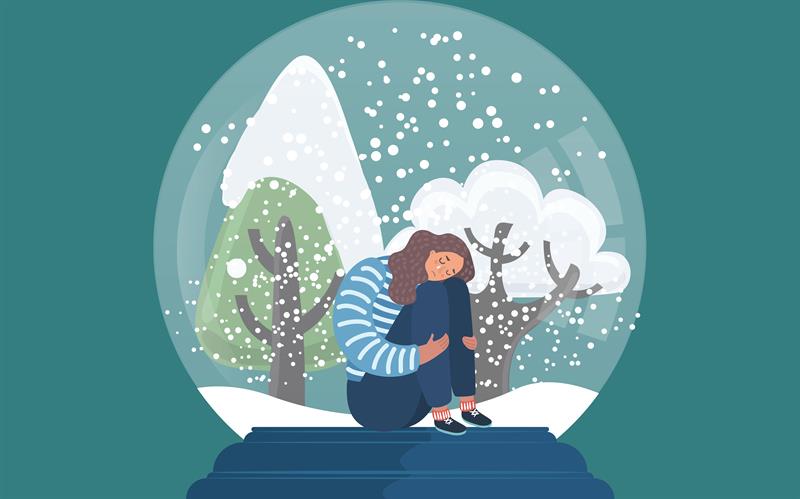
If you get depressed in the winter but feel better in spring and summer, you may indeed have seasonal affective disorder (or SAD), a wintertime depression that affects roughly 6 percent of Americans.
In most cases, SAD is related to the loss of sunlight in the winter months. Reduced sunlight can upset natural sleep-wake cycles and other circadian rhythms that can affect the body. It can also cause a drop in the brain chemical serotonin, which affects mood, and can increase the levels of the hormone melatonin, which can make you feel more tired and lethargic.
If you think you may have SAD, a trip to your doctor’s office is the best way to diagnose it or you can take a SAD “self-diagnostic” test at the Center for Environmental Therapeutics website at CET.org/self-assessment. In the meantime, here are several treatment options and remedies that can help.
Light therapy: The most effective treatment for SAD is sitting in front of a specialized light therapy box for 15 to 20 minutes a day. Light therapy mimics outdoor light to cause a change in brain chemicals linked to mood. It’s most effective when timed to fit a person’s individual circadian rhythm, which varies widely from person to person depending on whether they’re a night owl or a morning lark. You can calculate the proper time for doing light therapy by taking the circadian rhythm test at CET.org/self-assessment.
The best light therapy lamps provide 10,000 lux of illumination, many times stronger than typical indoor light, and have a diffuser screen that filters out ultraviolet rays and projects downward toward the eyes.
Some top-rated products as include the Carex Day-Light Classic Plus Lamp ($115), Verilux HappyLight Deluxe 10,000-Lux Sunshine Simulator ($160), and the Northern Light Technology Boxelite Desk Lamp ($190), all of which are available at Amazon.com.
Cognitive behavioral therapy: Even though SAD is considered to be a biological problem, identifying and changing thought and behavior patterns can help alleviate symptoms too. To help you with this, choose a therapist who specializes in cognitive behavioral therapy and who has experience in treating SAD. To locate someone in your area, check with the Association for Behavioral and Cognitive Therapies (FindCBT.org), or the Academy of Cognitive Therapy (AcademyofCT.org).
Antidepressants: Some people with SAD benefit from antidepressant treatment, especially if symptoms are severe. Some proven medications to ask your doctor about include the extended-release version of the antidepressant bupropion (Wellbutrin XL, Aplenzin), and antidepressants selective serotonin reuptake inhibitors (S.S.R.I.s), sertraline (also known as Zoloft) and fluoxetine (also known under the brand name Prozac).
But keep in mind that it may take several weeks to notice full benefits from an antidepressant. In addition, you may have to try different medications before you find one that works well for you and has the fewest side effects.
Lifestyle remedies: Some other things you can do to help alleviate your SAD symptoms include making your environment sunnier and brighter. So, open up your blinds, sit closer to bright windows and get outside as much as can. Even on cold or cloudy days, outdoor light can help, especially if you spend some time outside within two hours of getting up in the morning. Moderate exercise such as walking, swimming, yoga and even tai chi can also help alleviate SAD symptoms, as can social activities.
 Related Articles & Free Subscription
Related Articles & Free Subscription
6 Ways To Stay Energized During the Winter Months
Expand Your Edible Garden Indoors






Comment here